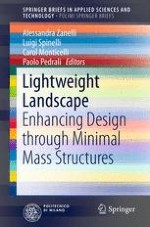This book explains how lightweight materials and structures can be deployed in buildings to meet high environmental and aesthetic standards and emphasizes how the concept of lightness in building technology and design dovetails with the desire to enhance landscape. The first part of the book, on lightweight construction, aims to foster the use of membranes within the specific climatic context and in particular considers how lightweight materials and innovative technologies can enrich the quality of temporary spaces. The second part focuses exclusively on landscape, presenting novel approaches in the search for visual lightness and the quest to improve urban spaces. Particular attention is paid to the Italian experience, where the traditional appreciation of brick and stone has limited the scope for use of lightweight structures and membrane materials, often relegating them to a secondary or inappropriate role. The reader will come to appreciate how this attitude demeans a very advanced productive sector and neglects the ancient tradition of temporary architecture.
